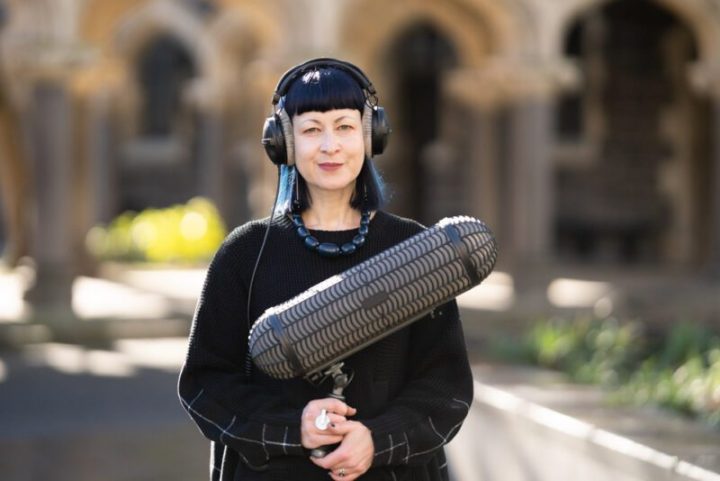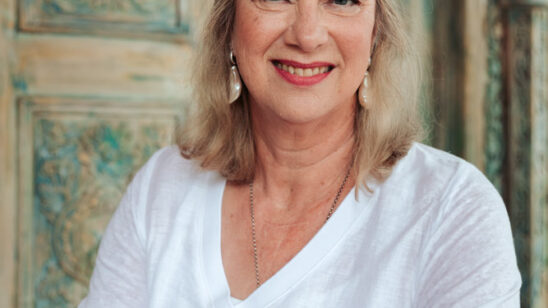
Seeing, hearing, tasting, touching and smelling
Christchurch sensory perceptionist Dr Jo Burzynska talks to Metropol editor Lynda Papesch about experiencing and enjoying the world around us.
The smell and that first sip of coffee in the morning, birdsong filtering through the traffic, the velvety petals of a rose; all invoke the use of our five main senses for brief moments here and there.
Dr Jo Burzynska takes using senses to a whole new level, and wants others to do the same. She’s currently creating an unusual exhibition ‘What might we find when we stop looking?’, to be held at Christchurch Arts Centre in May, exploring using more of the nonvisual senses.
Recently returned home to Christchurch with a PhD in multisensory art from UNSW Art & Design in Sydney, Jo is no stranger to exploring sensory perception.
She’s previously made numerous public sound works, and was one of the founders of The Auricle Sonic Arts Gallery and the Audacious Festival of Sonic Art.
A New Zealand-based wine journalist, author, judge, multisensory artist and researcher, Jo is well-known in the wine world, and has many other strings to her bow, including professionally trained musician and sound artist.
As part of an interdisciplinary PhD, she explored the influence of sound/music on the perception of wine aroma and flavour across the fields of art, sensory science and psychology. She now applies this knowledge in wine and music matching events, in international multisensory artworks presentations, and helping drinks companies integrate their product flavours with sound and other sensory and aesthetic elements.
Jo explains. “Sensory perception is how we make sense of the information we encounter in our environments through our senses. These senses were traditionally considered to be sight, hearing, taste, smell and touch, but are now widely agreed to include balance, and body awareness. We may in fact have as many as 32 senses.
“While our senses were once considered as working quite separately, advances in technology that lets us look inside the brain, has revealed that they’re actually highly connected. Our perception is inherently multisensory, and what we experience through different sensory channels at the same time influences each other.
“These sensory interactions (known as crossmodal perception), is what much of my research and recent creative projects have engaged with, specialising in those between hearing, and smell and taste.
An example she gives is sitting in her garden, hearing a bird chirping, the rustling of leaves, feeling a cool breeze against her skin, smelling cut grass and bark chips, and tasting the sweet-sour character of the lemonade she is sipping.
“Focusing on just my own specialisations, the high pitched chirping and cool breeze will be directing my attention to, and possibly intensifying, my experience of the grassy “top note” aroma of my lawn, and the lemony sourness of my drink.”
She kept her wine and music careers separate for a decade, until a hunch told her that music was affecting her perception of wine.
“I assumed this was just a product of my own high level engagement with both.
Then I read a study by a UK psychologist that demonstrated that people’s perceptions of the taste of a wine could be altered by the music they heard when tasting it. When I realised these interactions might be universal, I started to explore this in my own work.”
What might we find when we stop looking?
Jo’s exhibition is on at the Christchurch Arts Centre, 18 – 29 May.
Prior to that she plans to launch her perfume, Eau Tautahi, inspired by the aromas of the city, an edition of which will include soundscapes from the exhibition. Creating the exhibition, Jo wanted to avert the gaze from the visual perception that dominates much Western culture.
“As vision regularly distracts us from information delivered through other sensory channels, I wanted to discover what different understandings there might be when we rely on our other senses in encounters with our urban environment.
“For example, I led a multisensory walk that encouraged participants to dial down the visual. It is amazing the things you notice just walking down a street. It’s like opening a portal into another a world full of unseen stimulation.”
She says the walks and the resultant exhibition encourage exploring under-appreciated senses, such as touch. “We use it without thinking in our daily life, to discover information from the texture and temperature of our environments, to making emotional connection with others. However, there’s so much more we can do with it. Consequently, unlike most exhibitions, visitors will be encouraged to touch (and listen, and smell and taste) the art.



